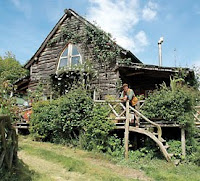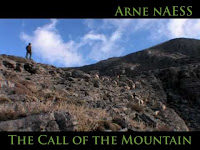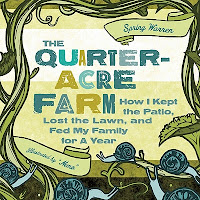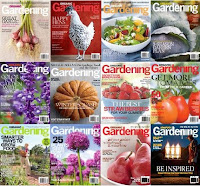The Best of Permaculture Media 2011
In 2011 Permaculture Media Blog published more than 1400 posts. This article is bringing you collection of 44 best webinars, documentaries, videos, eBooks and podcasts.
The most popular article of the last year is just from December 2011. With more than 3000 shares and 19 000 views in just one month, is this article absolutely the best:
Most popular article of the last year is just from December 2011. With more than 3000 shares and 19 000 views in just one month, is this article absolutely the best:
If you’ve ever considered getting into Permaculture, or if you’re a veteran Permaculturist who’s looking for a new skill to master, the following resources are the absolute best places for you to get started. Each of these books has the potential to introduce you to a whole new skill that you can enjoy for literally the rest of your life!
You will find here links to over 60 Free eBook previews and full eBooks!
Webinars and Lectures
Introduction to Permaculture – 40 hours of Free video lectures – This course will explore, through lectures, discussions, field trips, and required projects, a design/thinking methodology that seeks to profide for our physical needs, food, water, shelter, energy, etc., while doing so in an environmentally friendly, sustainable manner.
Michael Reynolds: Earthship Webinar – Michael Reynolds, inventor of the Earthship Concept sits down ‘with the world’ live, over the internet at the Phoenix Earthship. Entirely powered by the sun and the wind, the ‘Earthship Webinar’ is broken down into 8 parts and covers all aspects of Earthship Biotecture.
Biodynamic Farming Webinar: Top Ten Elements of Biodynamics – Join Paul Dolan for a discussion of the commonly used terms in Biodynamic farming. Biodynamic farmers take a holistic approach, with the goal of making the farm a self-contained, life-sustaining ecosystem. They understand a successful farm is a living community of plants, soil, wild and domestic animals, climate, and water – where all these elements converge and thrive.
Introduction to Permaculture – 18 part webinar with Bill Wilson of Midwest Permaculture – This is an 18 part 90 minute intro to permaculture webinar with Bill Wilson of Midwest Permaculture in Illinois. Bill has been teaching permaculture for 6 years. He holds 2 PDC Certificates and has Advanced Training in Permaculture Designň and in teaching Permaculture.
Paul Stamets: Mushroom Lecture – Paul sees the ancient Old Growth forests of the Pacific Northwest as a resource of incalculable value, especially in terms of its fungal genome. A dedicated hiker and explorer, his passion is to preserve, protect, and clone as many ancestral strains of mushrooms as possible from this pristine woodlands.
Climate Change and Land Use by Patrick Whitefield – explains the effect of climate change on land use, and more importantly, the effects of land use on climate change—in other words, what we can do to change reverse the warming.
Permaculture: Leadership for Sustainable Futures – A presentation by Professor Stuart Hill University of Western Sydney, to the Blue Mountains Permaculture community in June 2011, on permaculture and the ‘inner landscape’.
Keyline Design at the Beach by Darren Doherty – Darren Doherty, principal of Australia Felix Permaculture, builds a scale model watershed to explain how water cycles through the landscape in a sequence of natural patterns.
Documentary films
Dirt! The Movie (2009) – takes you inside the wonders of the soil. It tells the story of Earth’s most valuable and underappreciated source of fertility–from its miraculous beginning to its crippling degradation. The opening scenes of the film dive into the wonderment of the soil. Made from the same elements as the stars, plants and animals, and us, “dirt is very much alive.” Though, in modern industrial pursuits and clamor for both profit and natural resources, our human connection to and respect for soil has been disrupted.
 The Power of Community: How Cuba Survived Peak Oil – “The Power of Community” is creating excitement in localization groups, and with good reason. In this film, individual Cubans tell us how they responded to an artificially imposed “Peak Oil” in the 1990s, when the fall of the Soviet Union caused the loss of most food and oil imports. Their stories serve as a valuable model for a world facing Peak Oil on a global scale. Cuba’s transition to a low-energy society is hopeful and instructive.
The Power of Community: How Cuba Survived Peak Oil – “The Power of Community” is creating excitement in localization groups, and with good reason. In this film, individual Cubans tell us how they responded to an artificially imposed “Peak Oil” in the 1990s, when the fall of the Soviet Union caused the loss of most food and oil imports. Their stories serve as a valuable model for a world facing Peak Oil on a global scale. Cuba’s transition to a low-energy society is hopeful and instructive.
Channel 4: Grand Designs: Ben Law – Build an Eco-Home from the woods – In this monumental documentary, the famous British woodsman Ben Law is covered as he plans and executes the development of the wooden house of his (and monay others’) dreams. Build entirely of wood that he himself has husbanded, on land that he has cared for, this represents the culmination of a lifetimes work and acheivement in modern environmentalism.
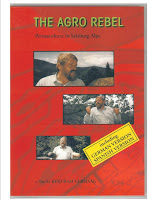 Sepp Holzer – The Agro Rebel: Permaculture in Salzburg Alps (Der Agrar-Rebel) – Sepp Holzer, the Austrian farmer and forester practices “permaculture” a different kind of farming on his mountain property. With this certain form of organic-agriculture, he is very convincing and successfully. Contrary to all conventional rules and despite annual average temperatures of 4.5°C and an altitude of between 900m-1400m, he cultivates cherries, apples, mushrooms, kiwis, lemons, pumpkins, potatoes and zucchinis. This year he also started big permaculture-projects in Brazil, Columbia, Peru and Venezuela.
Sepp Holzer – The Agro Rebel: Permaculture in Salzburg Alps (Der Agrar-Rebel) – Sepp Holzer, the Austrian farmer and forester practices “permaculture” a different kind of farming on his mountain property. With this certain form of organic-agriculture, he is very convincing and successfully. Contrary to all conventional rules and despite annual average temperatures of 4.5°C and an altitude of between 900m-1400m, he cultivates cherries, apples, mushrooms, kiwis, lemons, pumpkins, potatoes and zucchinis. This year he also started big permaculture-projects in Brazil, Columbia, Peru and Venezuela.
Arne Naess and Deep Ecology Movement – The Call of the Mountain (1997) – Portrait of the Norwegian philosopher Arne Naess and the Deep Ecology Movement. Made in 1997 by Rerun Productions, The Netherlands. Shot on location in Naess’s hut Tvergastein on the Hardangervidda mountain plateau, and in Berkeley, USA. With Bill Devall, Vandana Shiva, George Sessions, Helena Norberg-Hodge, and Harold Glasser.
 The End of Suburbia: Oil Depletion and the Collapse of The American Dream – Global oil peak and the inevitable decline of fossil fuels are upon us now, Are today’s suburbs destined to become the slums of the future? This is a short version of “The End of Suburbia: Oil Depletion and the Collapse of The American Dream”, a documentary about the end of the age of cheap oil. The film is hosted by Canadian broadcaster Barrie Zwicker and features discussions with James Howard Kunstler, Peter Calthorpe, Michael Klare, Richard Heinberg, Matthew Simmons, Michael Ruppert, Julian Darley, Colin Campbell, Kenneth S. Deffeyes, Ali Samsam Bakhtiari and Steve Andrews.
The End of Suburbia: Oil Depletion and the Collapse of The American Dream – Global oil peak and the inevitable decline of fossil fuels are upon us now, Are today’s suburbs destined to become the slums of the future? This is a short version of “The End of Suburbia: Oil Depletion and the Collapse of The American Dream”, a documentary about the end of the age of cheap oil. The film is hosted by Canadian broadcaster Barrie Zwicker and features discussions with James Howard Kunstler, Peter Calthorpe, Michael Klare, Richard Heinberg, Matthew Simmons, Michael Ruppert, Julian Darley, Colin Campbell, Kenneth S. Deffeyes, Ali Samsam Bakhtiari and Steve Andrews.
Life After People (History Channel) – Complete Season One – What would happen if every human being on Earth disappeared? This isn t the story of how we might vanish it is the story of what happens to the world we leave behind. Building off the success of the HISTORY two-hour special Life After People, this series continues the exploration of a world wiped clean of humanity, in even more vivid detail.
Animated videos
Visualizing a Plenitude Economy – This beautifully drawn 5-minute video provides a vision of what a post-consumer society could look like, with people working fewer hours and pursuing re-skilling, homesteading, and small-scale enterprises that can help reduce the overall size and impact of the consumer economy.
Who killed economic growth? – The video covers Richard Heinberg’s startling (yet painfully obvious) diagnosis: humanity has reached a fundamental turning point in its economic history. The expansionary trajectory of industrial civilization is colliding with non-negotiable natural limits.
The Story of Broke (2011) – The Story of Broke calls for a shift in government spending toward investments in clean, green solutions—renewable energy, safer chemicals and materials, zero waste and more—that can deliver jobs AND a healthier environment. It’s time to rebuild the American Dream; but this time, let’s build it better.
TED Videos
Marcin Jakubowski: Open-sourced blueprints for civilization – Using wikis and digital fabrication tools, TED Fellow Marcin Jakubowski is open-sourcing the blueprints for 50 farm machines, allowing anyone to build their own tractor or harvester from scratch. And that’s only the first step in a project to write an instruction set for an entire self-sustaining village (starting cost: $10,000).
Michael Pawlyn: Using nature’s genius in architecture – How can architects build a new world of sustainable beauty? By learning from nature. At TEDSalon in London, Michael Pawlyn describes three habits of nature that could transform architecture and society: radical resource efficiency, closed loops, and drawing energy from the sun.
Eben Bayer: Are mushrooms the new plastic? – Eben Bayer is co-inventor of MycoBond, an organic (really — it’s based on mycelium, a living, growing organism) adhesive that turns agriwaste into a foam-like material for packaging and insulation.
Naomi Klein: Addicted to risk – Days before this talk, journalist Naomi Klein was on a boat in the Gulf of Mexico, looking at the catastrophic results of BP’s risky pursuit of oil. Our societies have become addicted to extreme risk in finding new energy, new financial instruments and more … and too often, we’re left to clean up a mess afterward. Klein’s question: What’s the backup plan?
Dave Meslin: The antidote to apathy – Local politics — schools, zoning, council elections — hit us where we live. So why don’t more of us actually get involved? Is it apathy? Dave Meslin says no. He identifies 7 barriers that keep us from taking part in our communities, even when we truly care.
Free eBooks and eBook previews
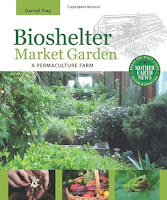 Bioshelter Market Garden: A Permaculture Farm by Darrell Frey – At the heart of Three Sisters is its bioshelter—a solar greenhouse that integrates growing facilities, poultry housing, a potting room, storage, kitchen facilities, compost bins, a reference library, and classroom area. Bioshelter Market Garden examines how the bioshelter promotes greater biodiversity and is an energy-efficient method of extending crop production through Pennsylvania’s cold winter months. Both visionary and practical, this fully illustrated book contains a wealth of information on the application of permaculture principles.
Bioshelter Market Garden: A Permaculture Farm by Darrell Frey – At the heart of Three Sisters is its bioshelter—a solar greenhouse that integrates growing facilities, poultry housing, a potting room, storage, kitchen facilities, compost bins, a reference library, and classroom area. Bioshelter Market Garden examines how the bioshelter promotes greater biodiversity and is an energy-efficient method of extending crop production through Pennsylvania’s cold winter months. Both visionary and practical, this fully illustrated book contains a wealth of information on the application of permaculture principles.
 How to Make a Forest Garden by Patrick Whitefield – A forest garden is a food-producing garden, based on the model of a natural woodland or forest. It is made up of fruit and nut trees, fruit bushes, perennial vegetables and herbs. It can be tailored to fit any space, from a tiny urban back yard to a large rural garden. This highly practical, yet inspiring book gives you everything you need to know in order to create a beautiful and productive forest garden. It is also a low-maintenance way of gardening. Once established there is none of the digging, sowing, planting out and hoeing of the conventional kitchen garden. The main task is picking up the produce!
How to Make a Forest Garden by Patrick Whitefield – A forest garden is a food-producing garden, based on the model of a natural woodland or forest. It is made up of fruit and nut trees, fruit bushes, perennial vegetables and herbs. It can be tailored to fit any space, from a tiny urban back yard to a large rural garden. This highly practical, yet inspiring book gives you everything you need to know in order to create a beautiful and productive forest garden. It is also a low-maintenance way of gardening. Once established there is none of the digging, sowing, planting out and hoeing of the conventional kitchen garden. The main task is picking up the produce!
The Quarter-Acre Farm: How I Kept the Patio, Lost the Lawn, and Fed My Family for a Year by Spring Warren – Full of tips and recipes to help anyone interested in growing and preparing at least a small part of their diet at home, The Quarter-Acre Farm is a warm, witty tale about family, food, and the incredible gratification that accompanies self-sufficiency. The Quarter-Acre Farm is Warren’s account of deciding—despite all resistance—to take control of her family’s food choices, get her hands dirty, and create a garden in her suburban yard. It’s a story of bugs, worms, rot, and failure; of learning, replanting, harvesting, and eating.
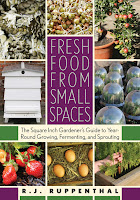 Fresh Food from Small Spaces: The Square-Inch Gardener’s Guide to Year-Round Growing, Fermenting, and Sprouting by R.J. Ruppenthal – Readers will learn how to transform their balconies and windowsills into productive vegetable gardens, their countertops and storage lockers into commercial-quality sprout and mushroom farms, and their outside nooks and crannies into whatever they can imagine, including sustainable nurseries for honeybees and chickens. Free space for the city gardener might be no more than a cramped patio, balcony, rooftop, windowsill, hanging rafter, dark cabinet, garage, or storage area, but no space is too small or too dark to raise food.
Fresh Food from Small Spaces: The Square-Inch Gardener’s Guide to Year-Round Growing, Fermenting, and Sprouting by R.J. Ruppenthal – Readers will learn how to transform their balconies and windowsills into productive vegetable gardens, their countertops and storage lockers into commercial-quality sprout and mushroom farms, and their outside nooks and crannies into whatever they can imagine, including sustainable nurseries for honeybees and chickens. Free space for the city gardener might be no more than a cramped patio, balcony, rooftop, windowsill, hanging rafter, dark cabinet, garage, or storage area, but no space is too small or too dark to raise food.
 What’s Wrong With My Plant? (And How Do I Fix It?): A Visual Guide to Easy Diagnosis and Organic Remedies by David Deardorff, Kathryn Wadsworth – provides an easy system for visually diagnosing any problem, and matching it to the right cure. Whether your garden consists of herbs on a kitchen windowsill, a vegetable garden, an elaborate backyard border, or a container on a patio, What’s Wrong With My Plant? is an indispensable resource. If you can see it, you can fix it. Curing a sick plant just doesn’t get any easier.
What’s Wrong With My Plant? (And How Do I Fix It?): A Visual Guide to Easy Diagnosis and Organic Remedies by David Deardorff, Kathryn Wadsworth – provides an easy system for visually diagnosing any problem, and matching it to the right cure. Whether your garden consists of herbs on a kitchen windowsill, a vegetable garden, an elaborate backyard border, or a container on a patio, What’s Wrong With My Plant? is an indispensable resource. If you can see it, you can fix it. Curing a sick plant just doesn’t get any easier.
 Solar Electricity Handbook – 2011 Edition: A Simple Practical Guide to Solar Energy – Designing and Installing Photovoltaic Solar Electric Systems by Michael Boxwell – is a simple, practical guide to using electric solar panels and designing and installing photovoltaic PV systems. The 2011 edition has been extensively revised, with new chapters, new information on grid-tie systems and financial incentive schemes, new diagrams and more example projects.
Solar Electricity Handbook – 2011 Edition: A Simple Practical Guide to Solar Energy – Designing and Installing Photovoltaic Solar Electric Systems by Michael Boxwell – is a simple, practical guide to using electric solar panels and designing and installing photovoltaic PV systems. The 2011 edition has been extensively revised, with new chapters, new information on grid-tie systems and financial incentive schemes, new diagrams and more example projects.
The Transition Companion: Making Your Community More Resilient in Uncertain Times by Rob Hopkins – picks up the story today, drawing on the experience of one of the most fascinating experiments under way in the world. It tells inspiring tales of communities working for a future where local economies are valued and nurtured; where lower energy use is seen as a benefit; and where enterprise, creativity, and the building of resilience have become cornerstones of a new economy.
 The Long Emergency: Surviving the End of Oil, Climate Change, and Other Converging Catastrophes of the Twenty-First Century by James Howard Kunstler – tells us just what to expect after we pass the point of global peak oil production and the honeymoon of affordable energy is over, preparing us for economic, political, and social changes of an unimaginable scale. Riveting and authoritative, The Long Emergency is a devastating indictment that brings new urgency and accessibility to the critical issues that will shape our future, and that we can no longer afford to ignore.
The Long Emergency: Surviving the End of Oil, Climate Change, and Other Converging Catastrophes of the Twenty-First Century by James Howard Kunstler – tells us just what to expect after we pass the point of global peak oil production and the honeymoon of affordable energy is over, preparing us for economic, political, and social changes of an unimaginable scale. Riveting and authoritative, The Long Emergency is a devastating indictment that brings new urgency and accessibility to the critical issues that will shape our future, and that we can no longer afford to ignore.
 Sharing the Harvest: A Citizen’s Guide to Community Supported Agriculture by Elizabeth Henderson, Robyn Van En – In this thoroughly revised and expanded edition of a Chelsea Green classic, authors Henderson and Van En provide new insight into making CSA not only a viable economic model, but the right choice for food lovers and farmers alike. Thinking and buying local is quickly moving from a novel idea to a mainstream activity. The groundbreaking first edition helped spark a movement and, with this revised edition, Sharing the Harvest is poised to lead the way toward a revitalized agriculture.
Sharing the Harvest: A Citizen’s Guide to Community Supported Agriculture by Elizabeth Henderson, Robyn Van En – In this thoroughly revised and expanded edition of a Chelsea Green classic, authors Henderson and Van En provide new insight into making CSA not only a viable economic model, but the right choice for food lovers and farmers alike. Thinking and buying local is quickly moving from a novel idea to a mainstream activity. The groundbreaking first edition helped spark a movement and, with this revised edition, Sharing the Harvest is poised to lead the way toward a revitalized agriculture.
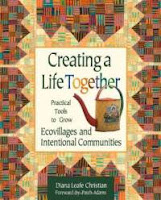 Creating a Life Together: Practical Tools to Grow Ecovillages and Intentional Communities by Diana Leafe Christian – is the only resource available that provides step-by-step practical information distilled from numerous firsthand sources on how to establish an intentional community. It deals in depth with structural, interpersonal and leadership issues, decision-making methods, vision statements, and the development of a legal structure, as well as profiling well-established model communities. This exhaustive guide includes excellent sample documents among its wealth of resources.
Creating a Life Together: Practical Tools to Grow Ecovillages and Intentional Communities by Diana Leafe Christian – is the only resource available that provides step-by-step practical information distilled from numerous firsthand sources on how to establish an intentional community. It deals in depth with structural, interpersonal and leadership issues, decision-making methods, vision statements, and the development of a legal structure, as well as profiling well-established model communities. This exhaustive guide includes excellent sample documents among its wealth of resources.
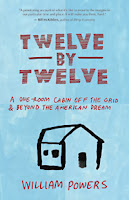 Twelve by Twelve: A One-Room Cabin Off the Grid and Beyond the American Dream by William Powers – Why would a successful American physician choose to live in a twelve-foot-by-twelve-foot cabin without running water or electricity? To find out, writer and activist William Powers visited Dr. Jackie Benton in rural North Carolina. No Name Creek gurgled through Benton’s permaculture farm, and she stroked honeybees’ wings as she shared her wildcrafter philosophy of living on a planet in crisis. Powers, just back from a decade of international aid work, then accepted Benton’s offer to stay at the cabin for a season while she traveled. There, he befriended her eclectic neighbors — organic farmers, biofuel brewers, eco-developers — and discovered a sustainable but imperiled way of life.
Twelve by Twelve: A One-Room Cabin Off the Grid and Beyond the American Dream by William Powers – Why would a successful American physician choose to live in a twelve-foot-by-twelve-foot cabin without running water or electricity? To find out, writer and activist William Powers visited Dr. Jackie Benton in rural North Carolina. No Name Creek gurgled through Benton’s permaculture farm, and she stroked honeybees’ wings as she shared her wildcrafter philosophy of living on a planet in crisis. Powers, just back from a decade of international aid work, then accepted Benton’s offer to stay at the cabin for a season while she traveled. There, he befriended her eclectic neighbors — organic farmers, biofuel brewers, eco-developers — and discovered a sustainable but imperiled way of life.
 Best of the Permaculture Drylands Magazine – Now Online! – Founded by Scott Pittman circa 1986, PDJ was (and remains) the only publication in the world with the specific focus on Drylands Permaculture. Published for 11 years (1986 – 1997) by the Permaculture Drylands Institute, operating out of Arizona and New Mexico, this publication has lots to offer to permaculture students even 10 years after its final issue was delivered.
Best of the Permaculture Drylands Magazine – Now Online! – Founded by Scott Pittman circa 1986, PDJ was (and remains) the only publication in the world with the specific focus on Drylands Permaculture. Published for 11 years (1986 – 1997) by the Permaculture Drylands Institute, operating out of Arizona and New Mexico, this publication has lots to offer to permaculture students even 10 years after its final issue was delivered.
Podcasts
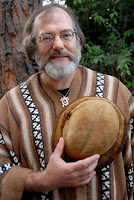 Paul Stamets, Fungal Intelligence and the 21st Psychedelic Journey – “How Mushrooms Can Help Save the World.” in our “11th Hour” – What is fungal intelligence? Paul Staments, the “Mycelium Messenger” reveals the great ecological purpose of mycelium – earth’s new internet. Beginning with his magic mushroom, psychedelic work covered with a DEA License and evolving into a much more robust work that his “mother is happy about” – this interview will prepare you to see a whole new world the next time you walk into the forest.
Paul Stamets, Fungal Intelligence and the 21st Psychedelic Journey – “How Mushrooms Can Help Save the World.” in our “11th Hour” – What is fungal intelligence? Paul Staments, the “Mycelium Messenger” reveals the great ecological purpose of mycelium – earth’s new internet. Beginning with his magic mushroom, psychedelic work covered with a DEA License and evolving into a much more robust work that his “mother is happy about” – this interview will prepare you to see a whole new world the next time you walk into the forest.
 Podcast with Paul Stamets, Rob Hopkins, and Richard Manning – Today’s episode features segments from Agroinnovations featuring well-known figures like Paul Stamets – a mycologist (aka mushroom specialist) from Olympia, Washington, the U.K’s Rob Hopkins who has popularized the Transition Town Movement and Montana journalist and author Richard Manning, who possesses a keen interest in the history and future of the American prairie and agriculture.
Podcast with Paul Stamets, Rob Hopkins, and Richard Manning – Today’s episode features segments from Agroinnovations featuring well-known figures like Paul Stamets – a mycologist (aka mushroom specialist) from Olympia, Washington, the U.K’s Rob Hopkins who has popularized the Transition Town Movement and Montana journalist and author Richard Manning, who possesses a keen interest in the history and future of the American prairie and agriculture.
 Joel Salatin: How to prepare for a future increasingly defined by localized food & energy (podcast + transcript) – Joel Salatin, proprietor of Polyface Farms and highly-visible champion of sustainable farming, thinks modern humans have become so far removed from a natural connection to the food they eat, that we no longer have a true understanding of what “normal” food is.
Joel Salatin: How to prepare for a future increasingly defined by localized food & energy (podcast + transcript) – Joel Salatin, proprietor of Polyface Farms and highly-visible champion of sustainable farming, thinks modern humans have become so far removed from a natural connection to the food they eat, that we no longer have a true understanding of what “normal” food is.
Permaculture on Your Balcony: Writer’s Voice Interviews Toby Hemenway
Audiobook
 Gardening Without Irrigation by Steve Solomon – Gardening expert Steve Solomon has written extensively on gardening techniques for the home gardener. Water conservation is the focus of this work, along with more information on how to have the healthiest plants in your garden through “fertigation”, appropriate plant rotation, and soil preparation.
Gardening Without Irrigation by Steve Solomon – Gardening expert Steve Solomon has written extensively on gardening techniques for the home gardener. Water conservation is the focus of this work, along with more information on how to have the healthiest plants in your garden through “fertigation”, appropriate plant rotation, and soil preparation.
Infographics
Reinventing Fire Infographic: 5 Interesting Facts About our Energy-Hogging Economy


